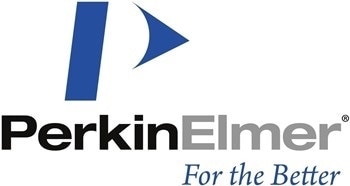Produced in Partnership with PerkinElmerReviewed by Olivia FrostNov 8 2022
Across the US, the cannabis and hemp testing markets continue to evolve with every election cycle. An increasing number of states are expanding their legal status for cannabis, and laboratory testing requirements also continue to change.
AZoLifeSciences sat down with Tom Kwoka, Senior Application Scientist - GC/MS at PerkinElmer, and Alex Maitan, GC/MS Cannabis Analysis at PerkinElmer, to discuss the benefits of analyzing residual solvents and terpenes from cannabis and hemp products by Headspace GC/MS analysis.
Could each of you please introduce who you are and what you do for our readers?
Tom Kwoka: Of course, I am Tom Kwoka, senior GC and GC/MS Field Application Scientist for PerkinElmer, and I have been with PerkinElmer for over 16 years.
Before coming to PerkinElmer, I worked in the environmental laboratory and petroleum industries for 19 years. I managed to build up a wealth of knowledge in each of these fields. I hold a BSc in chemistry from California State University, Sacramento, and I am responsible, among other things, for overseeing residual solvents at PerkinElmer.
Alex Maitan: I am Alex Maitan, and my role at PerkinElmer is Field Application Specialist for cannabis GC/MS applications. Before working at PerkinElmer, I was part of a small team to open a licensed and ISO 17025 accredited cannabis testing lab in Las Vegas, Nevada. This allowed me to develop a unique skillset in environmental and toxicology testing. I hold a BSc in biochemistry from the University of California Santa Barbara in 2015.
Thank you. Why is rigorous testing necessary in today's market, and what are the current challenges?
Tom: Currently, 47 of our 50 states have some form of regulation on allowing the use of cannabis and hemp products for either personal or medical use. These regulations require testing specific cannabis and hemp products for various constituents. First and foremost, residual solvent analysis is one of the most critical for human health and safety.
The analysis of cannabis and hemp products has created a series of challenges for the laboratories to overcome. Extracts, products, and the actual plant materials have forced a laboratory to develop many individual sample preparation and extraction techniques to allow for proper analytical analysis. In this world, one method does not fit all products.

Image Credit: ShutterStock/Chiociolla
For instance, California has become the basis for cannabis methodologies that many additional states are implementing or using as a blueprint for their state regulations. California's compound list and reporting limits have stretched the capabilities of routine GC/MC analysis.
Reporting limits from one PPM to 5,000 PPM are being performed in the same analytical run. The California list for residual solvents contains two common extraction solvents: methanol and IPA. Analytical standards routinely purchased from chemical companies typically come in methanol as well.
Alex: Due to the lack of knowledge in the overall market and either intense focus or almost non-focus on terpenes, laboratories have a unique role to play in the market. This is something laboratories do not usually have when it comes to things like cannabinoids or other testing components because what the consumer sees are the things the lab tests for.
Not a lot of consumers are very aware of how much of an effect terpenes have on the end consumer experience.
It is one of the additional variables that need to be taken to account to consider how well a strain will be rated or characterized, as well as what type of effect that sort of product and strain will have on the end consumer. One good analogy that is used is that it is like wine. You are not just judging the wine by how much alcohol it has. You judge it by the smell, the taste, what it pairs well with, and how it makes you feel. The same will be true with cannabis.
The growers who make these strains care a lot about the terpene profile because it can help distinguish the strain from other strains. It can help characterize what end therapeutic effects it will have, whether it is a sedative strain or a very active and creative strain, one good for pain relief or one good for recreational purposes.
What does the routine GC/MC analysis look like at PerkinElmer, and could you explain the instrumentation involved?
Tom: Typically, we use DMA as the extraction solvent for GC/MC analysis. Standard suppliers for the cannabis industry, like Emerald Scientific, are also making residual solvent standards in DMA. The instrumentation used here includes the Headspace sampler and the GC with a mass spectrometer detector.
We recommend using 250 milligrams of sample for residual solvents to ensure representative sampling. Typically, the concentrate matrix is an oil that needs to be dissolved in the DMA. Occasionally, a matrix you receive may need to be crushed, ground, or broken up. Dissolve the sample in five mils of DMA. This creates one to 20 dilutions of the sample.
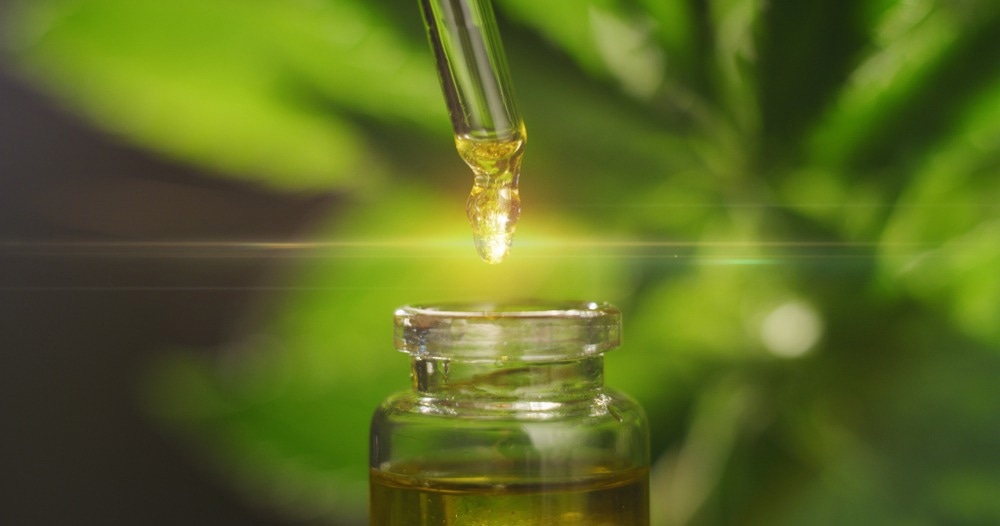
Image Credit: ShutterStock/Kitreel
We now place 20 microliters of the DMA sample extract in a Headspace vial and seal the vial. The vial is placed in the Headspace sampler and is ready for analysis. One of our major concerns when performing Headspace analysis is the partition coefficient.
When using large volumes of sample, we need to determine the proper heating and thermostating time for the sample to ensure that we have reached an equilibrium of sample concentration between the two phases. If we do not determine a proper temperature in time, we will not get reproducible results for our method.
With the total evaporation method we employ with this analysis, we have placed a small enough portion of the sample in the Headspace vial that we ensure a thermal expansion that will allow for all of the volatile material to totally evaporate, ensuring we have 100% of our residual solvents in the vapor phase of the vial. This creates a partition coefficient value of zero for our method.
With the proper thermostating temperature, we can also ensure that non-volatile components, like the cannabinoids, remain behind in the Headspace vial and are not injected into the GC/MS system, allowing it to stay cleaner.
Alex, could you please explain why the analysis of terpenes is important?
Alex: When we are quantifying terpenes, the terpenes that we choose to quantify end up having a larger effect on the end choices that the consumer makes. It also helps guide the growers into the type of strain selections they have. So, this is one of the more nuanced areas of testing that ends up being slightly more interlaced with the rest of the market.
I would like to start by explaining what terpenes are: Terpenes are aromatic oils that are native and found in biological plant materials. Cannabis is particularly rich in terpenes, but virtually every plant has a significant number of terpenes within it.
When you break up grass, it smells grassy. That is because of the terpene content. If you take a whiff of a rose, the terpene content gives it a unique smell. Cannabis is no exception.

Image Credit: ShutterStock/AppleZoomZoom
Another example of terpenes is essential oils. Essential oils are usually terpenes diluted in a different type of oil to make it, at least the theory goes, more medically relevant and useful to its applications. In cannabis, there are hundreds. Usually, only a dozen or two terpenes are of major interest, although all do have some theoretical effect.
Some of these terpenes, for example, myrcene, have direct binding action on the cannabinoid and the CB1 or CB2 receptors, which augments the behavior of the cannabinoids on those receptors.
How are terpenes defined?
Alex: Terpene are chemical structures, so by technical definition, they are characterized by their chemical makeup. In this case, there are classes of terpenes characterized by a five-carbon molecule called an isoprene in the structure of the terpene.
The different classes (monoterpenes, diterpenes, and sesquiterpenes) correspond to how many of these five-carbon molecules there are: monoterpenes have one isoprene; diterpenes have two; sesquiterpenes have three. There are larger terpenes than just mono, dis and tris, but these are the most relevant ones, and these are the ones that end up being tested for.
Tom, why is the analysis of residual solvents so important?
Tom: Residual solvent analysis is important because you do not always know what the producers use for their extraction process. There are many different chemicals and solvents that will extract terpenes and cannabinoids from cannabis and hemp. Not all of these chemicals used are pure, and most are poisonous to the human body.
While most producers would not think of using benzene, toluene, or xylenes as an extraction solvent, most of the analytes on the California list are contaminants in the products that are being used for extraction.
High-purity solvents can cost five times more than a technical-grade solvents, which will increase production costs. Using a cheaper product has a cost-benefit but may lead to an increase in extracts failing their tests and needing to be destroyed.
What are the main extraction methods used, and what advantages/disadvantages do they have?
Tom: There are three major commercial methodologies used in the extraction of cannabis and hemp: supercritical fluid CO2, hydrocarbon, and ethanol. Each technique has its advantages and disadvantages. It is important to understand the process so we can understand the analysis. Let us take a look at the three processes.
Supercritical fluid CO2 is considered the cleanest of the extraction processes. If done properly, there should be no residual solvents present after the extraction process. Unfortunately, the CO2 itself may not be a clean grade and contain contaminants that are on the solvents lists for your state.
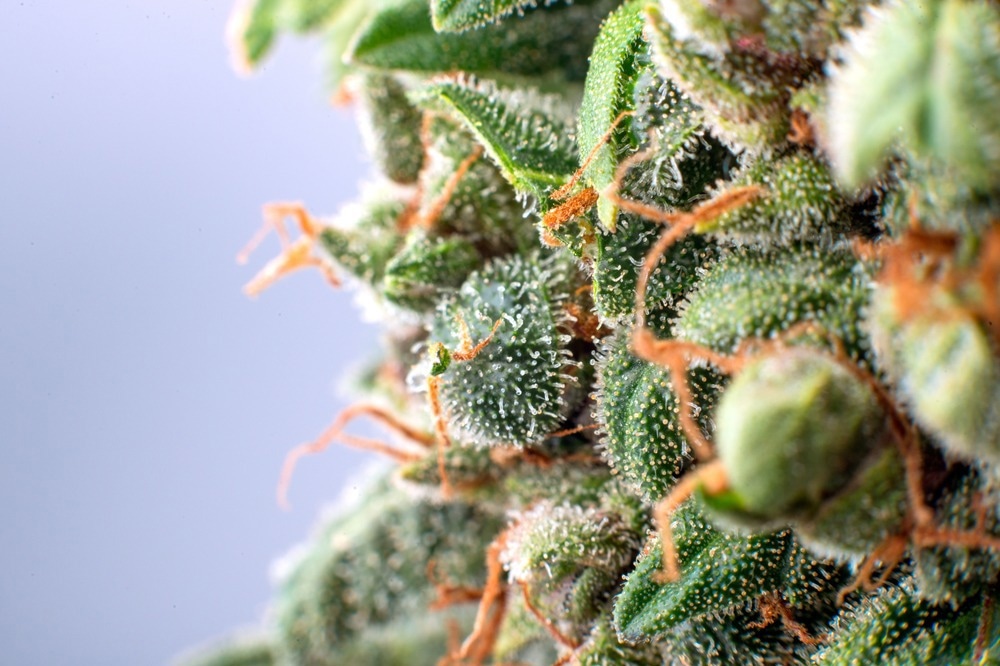
Image Credit: ShutterStock/Yarygin
Butane as a hydrocarbon extraction process is quite common. Closed-loop systems ensure a high recovery rate of cannabinoids and terpenes. Extracts are fairly clean, as butane is not a great solvent for extracting chlorophyll and lipids from the plant material. The downside here is that you need to drive off the butane after the extraction process.
Some less common extraction solvents are easier to work with as they can be done in large open vats and do not require as expensive equipment as supercritical fluid CO2.
Ethanol is a common solvent used for extraction and used in the preparation of tinctures. Ethanol does, however, extract the lipids and chlorophyll from the plant material that butane does not.
The producers need to perform additional cleanup processes to separate these from their final product. One downside of methanol is methanol is a major contaminant of ethanol from its manufacturing process.
Great, thank you, Tom. Alex, perhaps you could explain more about why terpenes are attracting so much market attention at the moment?
Alex: People see terpenes in different ways. Growers will see terpenes potentially in their metabolic pathways from how they are biosynthesized within the plant and then expressed later in the adult plant. Other manufacturers will see terpenes by their medical effects and what they can do for the end consumer. We, of course, are chemists, so we are sticking to the technical chemical definition of what terpene is.
One of the primary reasons for interest in terpenes is due to their component in what is known or referred to as the entourage effect. The joke that I have heard about the entourage effect is that it is just another term for 'we do not know'. And we do not truly know how all of these cannabinoids, terpenoids, flavonoids, and all the other components of cannabis come together to make its end effect.
A common example is if you take THC, synthesize it, and put it in a pill, which is currently called Marinol, and then you give it to someone, they tend to have very negative opinions of its end effect.
However, if you grow a plant and then you find a way for the consumer to consume it, this is a several-billion-dollar industry. Marinol existed for a long time and had very little commercial success. This is all part of ongoing market development, research, and innovation testing. Terpenes are of great interest in all of this due to how many unknowns there still are within this class of compounds.
What role does refinement play in production, and how can the laboratory assist in this process?
Tom: When further refinement is needed from the initial extraction process, the producers can employ distillation and winterization techniques to clean up their products. What this does for the laboratories is provide additional sample matrices that need to be treated differently from an initial extraction process.
Distillation is the process where a large volume of the extract is placed in a boiling flask, and as the temperature of the flask is slowly raised, different boiling fractions of material are separated and collected. This technique can separate the terpenes from the oil and also separate different fractions of THC and CBD compounds.
Winterization is where the solvent-extracted cannabis product is chilled or frozen to precipitate out different fractions of waxes, lipids, and oils. This technique, again, produces different types of products for the laboratory to handle.
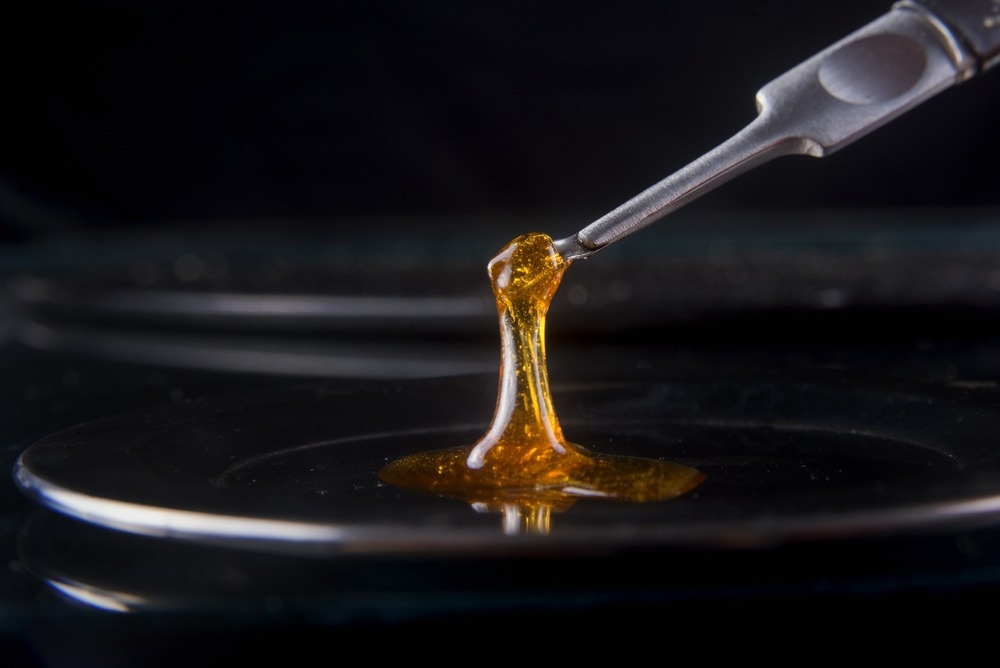
Image Credit: ShutterStock/Roxana Gonzalez
Class one residual solvents all have a reporting limit of one PPM. Class two has reporting limits from 290 to 5,000 ppm. While full scan GC/MS analysis easily sees the class two solvents, you may need to utilize selective ion monitoring or SIM analysis to detect some of the class one solvents. This is easily set up in the mass spec method where needed.
The most critical parts of the residual solvent analysis are the sample preparation and the preparation of calibration standards. Due to the highly volatile nature of some of the target analytes like butane and ethylene oxide, great care must be taken to quickly prepare and process your samples.
Calibration standards must be kept in a freezer during standards preparation to ensure accurate calibration. We even recommend that all syringes and volumetric glassware be chilled prior to use.
Alex, how do chemists look at terpenes in analytical terms?
Alex: Terpenes are gas phase analytes which means we use gas chromatography equipment, something that essentially analyzes air. Terpenes are usually analyzed using an FID, flame ionization detector, or mass spectrometer. We utilize a mass spectrometer to disambiguate terpenes from one another and to acquire positive identifications of these terpenes, as chemically, they do have a lot of potential similarities.
Cannabis has hundreds of terpenes, and we are detecting 23 of them. To separate out those 23 analytes of interest from the hundreds of analytes that are within cannabis natively is the basis of chromatography.
There are additional considerations to make in all of this. With cannabis, the terpene content can be in excess of 1% by weight, which is quite a lot.
That is the equivalent of 10,000 PPM and we generally need to have an overall system set up and sample prep that can handle all of these considerations: this is the system we currently use at PerkinElmer - Clarus 690 GC with a Headspace autosampler connected to the Clarus SQ 8 mass spectrometer.
Could you explain how the GC/MC analysis process works using the PerkinElmer Headspace instrument?
Tom: When samples or calibration standards have been prepared, we place the 20-microliter aliquot in the sample vial and seal. The vials are placed in the Headspace sample rack, and the operator starts the system. The sample vials are moved into the heated oven for thermostating. This technique combines the extraction and concentration of volatile components into one process.
When the Headspace system is in standby mode during the thermostating process, solenoid valves one and two are in the open position. A carrier gas is flowing through the GC column and the needle to ensure a constant purging of the needle to reduce carryover. This position is maintained throughout the sample thermostating time.
After we reach our thermostating time, the Headspace needle is injected through the septum, and the vial is pressurized to our set pressure. This step ensures a constant sampling rate from sample to sample as different matrices may have different natural pressures created during the heating process from the sample and possible contaminants in the sample.
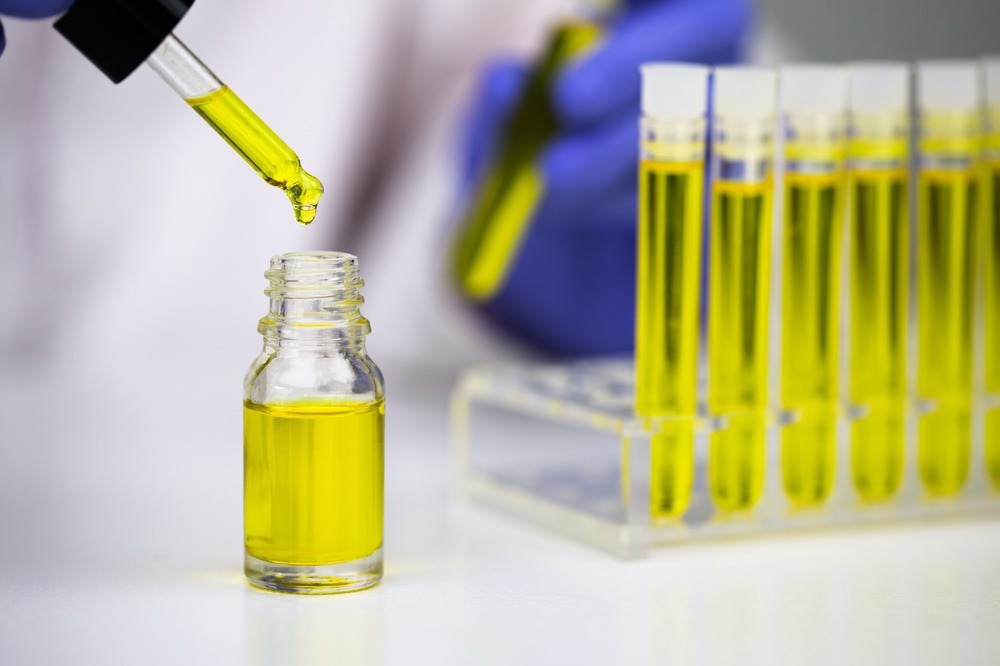
Image Credit: ShutterStock/Tinnakorn jorruang
After our pressurization time, the solenoid valve moves once again to allow for a set volume of sample to be released from the pressurized vial and move down the transfer line to the injector of the GC. We can control this injection time based on how many samples we need to inject for our reporting limits.
Once the injection time has passed, the solenoid valve switches again, stopping the transfer of the sample to the GC. This is referred to as the withdrawal time. The vial is then vented to release the remaining pressure in the vial before the needle is withdrawn and returns to the standby mode.
Alex: I would like to add that our GC system and terpene analytical method relies on a Headspace autosampler injector.
Traditionally, terpenes were analyzed through liquid injection, which is essentially taking a small amount of liquid, introducing it into a very hot chamber which causes it to volatilize and evaporate very rapidly, and injecting it into the GC column for separation and later detection. Our method utilizes Headspace, which essentially takes your sample into a vial, and heats it up, and then the air of the vial is introduced into the system.
The liquid injection was the traditional way for terpene analysis in the academic space for certain reasons of control and variability in method application. However, cannabis is a commercial space, and there are some very pragmatic issues with liquid injection.
The biggest issue with a liquid injection when it comes to cannabis is that cannabis is a dirty matrix. It is waxy. It is oily. It has a lot of other analytes. When it is introduced into the column in such a way that it is extracted into a liquid, and that liquid is then sprayed into a hot chamber, all of those waxes and oils and everything else start coating the chamber.
It causes a lot of dirt and grime which leads to lower sensitivity, higher baseline noise, and worse analysis. The only way to overcome this is with maintenance. You have to clean it. You have to change the liners. You have to trim columns. In a commercial space, this is a lot of time and energy spent, and this can cause issues with ongoing sample analysis.
How easy is it to control the GC/MC analysis process?
Tom: To optimize the Headspace method, there are a few parameters we control and set. These settings can change for some special sample matrices, but we have worked up typical settings we use when a GC/MS system is installed for cannabis. The most critical settings are the sample oven thermostating temperature, needle and transfer line temperatures, and thermostating time. These have been developed based on using DMA as the diluting solvent.
What are the main challenges involved in terpene analysis?
Alex: Accurate analysis and quantitation of terpenes may be difficult due to some less obvious pitfalls of terpene analysis. One common pitfall is what is referred to as matrix retention. Some of these terpenes are very heavy and also non-polar. When they come in a heavy and non-polar matrix such as cannabis oil, there can be a reduced response and, therefore, an inaccurate result in your terpene analysis.
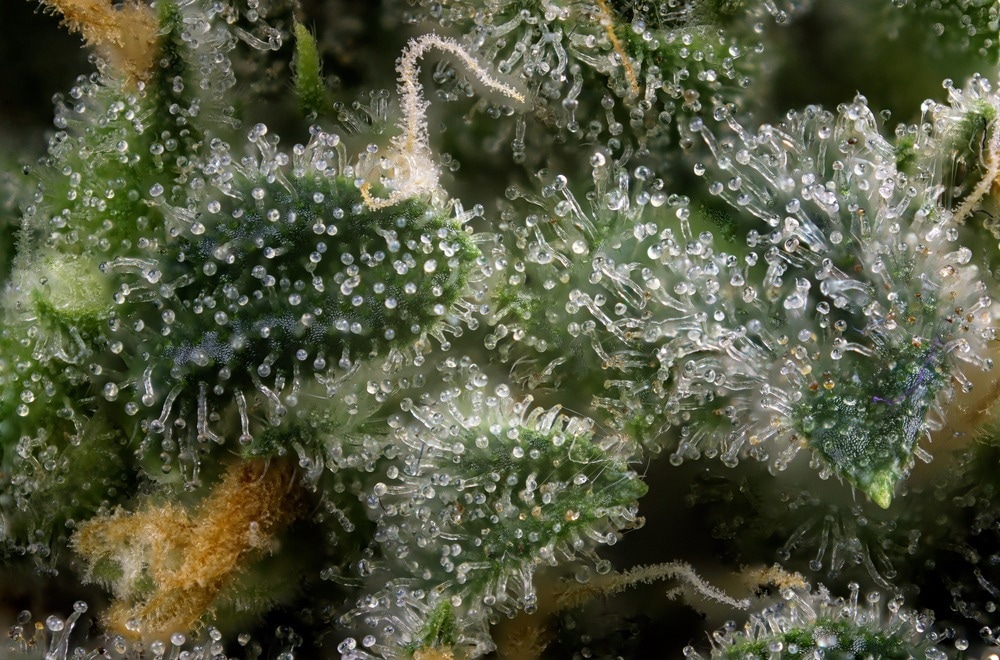
Image Credit: ShutterStock/Roxana Gonzalez
When it comes to terpenes, a lot of these issues are from the sample prep - our methodology takes some of these issues into consideration. We have a unique solvent blend, which helps with the ionization and recovery of these analytes, and there are considerations for the sample prep and storage, which can be an expensive source of error for these laboratories.
These terpenes have chemical behaviors such as volatility and oxygen degradation, which need to be accounted for to ensure accurate analysis.
Finally, could you explain the advantages of using the PerkinElmer Headspace instrument?
Tom: As I mentioned earlier, we have worked to develop parameters that do not overload the Headspace or GC/MS system. The use of 20 microliters of the extracted sample allows for total evaporation of the DMA matrix, but also does not overload the GC injector or column.
Using 100 microliters of DMA could give five times better detection limits, but we are not going to get total evaporation of the DMA. This could cause some solvents to remain in the sample phase of the DMA and change our partition coefficient, which we are trying to drive to a value of zero. Someone once tried to use the entire five milliliters of their extract and did not understand why the method did not work.
Alex: I would say that an advantage of Headspace analysis is that it gives a little bit more versatility in how you can do your sample prep. For commercial laboratories, there is the method of direct analysis.
If testing is in California, this is not relevant or permitted. However, in other states, because of how easy it is to do this type of sample prep and its relative accuracy of analysis, some laboratories do conduct direct analysis, which is putting the raw flour sample or other types of the matrix into the vial, capping it, and running it.
This ignores and makes the step of extraction, which also has its own necessary cleanup, irrelevant. It makes the sample prep much faster, which means that many more samples can be processed in the laboratory per staff hour.
For both terpenes and residual solvents, we do have operational procedures available as model documents for your laboratories. This can help generate the necessary documents that will be required for ISO accreditation or licensure in most states.
This gives a robust and versatile platform for your staff to work off of and develop your own lab-specific procedures, documents, and methodologies, which helps save time and helps your lab get open as quickly as possible.
About PerkinElmer Cannabis & Hemp Testing Solutions
With the cannabis and hemp markets continuing to grow rapidly and regulations strengthening, labs increasingly need streamlined access to best-in-class testing solutions geared toward the industry's unique requirements. Whether your lab is well established or just starting up, PerkinElmer is a single-source vendor for instruments, methods, reagents, and consumables on hand to help enhance your testing capacity and get ahead of the competition.
They help drive analytical best practices and operating procedures and commit to ensuring your laboratory has maximum uptime. Learn about their various instruments, testing methods, and applications for cannabis analyses. Let them work with you to build an efficient workflow, so you can focus on growing your business.
